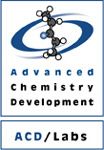Corporate Retrospective 2007: ACD Labs
While most chromatographers would agree that development of effective, short, and stable chromatographic methods requires elements of personal intuition and systematic screening, some might argue that it is in fact more art than science.
While most chromatographers would agree that development of effective, short, and stable chromatographic methods requires elements of personal intuition and systematic screening, some might argue that it is in fact more art than science. While human expertise and decision-making skills can never be replaced, one cannot overlook the value of software now available to assist by applying a systematic scientific approach to method screening and optimization.

In 1995, ACD/Labs began its foray into the world of chromatography with two products for the simulation of LC and GC separations, followed by products to process and manage chromatographic data from multiple sources in a single interface. With other innovations came the ability to model the pH of a buffer based on the chemical structures of the analytes-one of the least trivial tasks in method development. In 2003, the company provided an aid for chromatographic method development, helping scientists find better starting points for optimization, and incorporating such features as pKa predictions, structure-enabled applications databasing, and automated peak matching. 2005 saw the addition of structure-searchable databases of chiral methods. In 2006, the company's software became the first solution that supports both UV (DAD, PDA) and MS data, and offers convenient screening and project management tools. In 2007, ACD/Labs plans to release a fully automated method development system linking our software to chromatographic data systems from Agilent and Waters Corporation. This seamless connection between decision-making tools and instrumentation controls simplifies the entire method development process, filling a growing need to provide tools for increased productivity and automation.
I firmly believe that the products and innovations that we will be offering over the next few years will change the way that chromatographers approach method development. As the ability to generate experimental data faster grows, so does the need to properly manage it. To meet this need, ACD/Labs will continue to develop products that help deal with the resulting avalanche of data in a coherent and logical manner-simplifying, reducing the drudgery, and leaving experts more time to perform those tasks for which science cannot effectively substitute intuition.
Congratulations to LCGC North America on their 25th anniversary.

Michael McBrien
Michael McBrien
Chromatography Product Manager
Advanced Chemistry Development, Inc.
Toronto, Ontario, Canada

Regulatory Deadlines and Supply Chain Challenges Take Center Stage in Nitrosamine Discussion
April 10th 2025During an LCGC International peer exchange, Aloka Srinivasan, Mayank Bhanti, and Amber Burch discussed the regulatory deadlines and supply chain challenges that come with nitrosamine analysis.



















